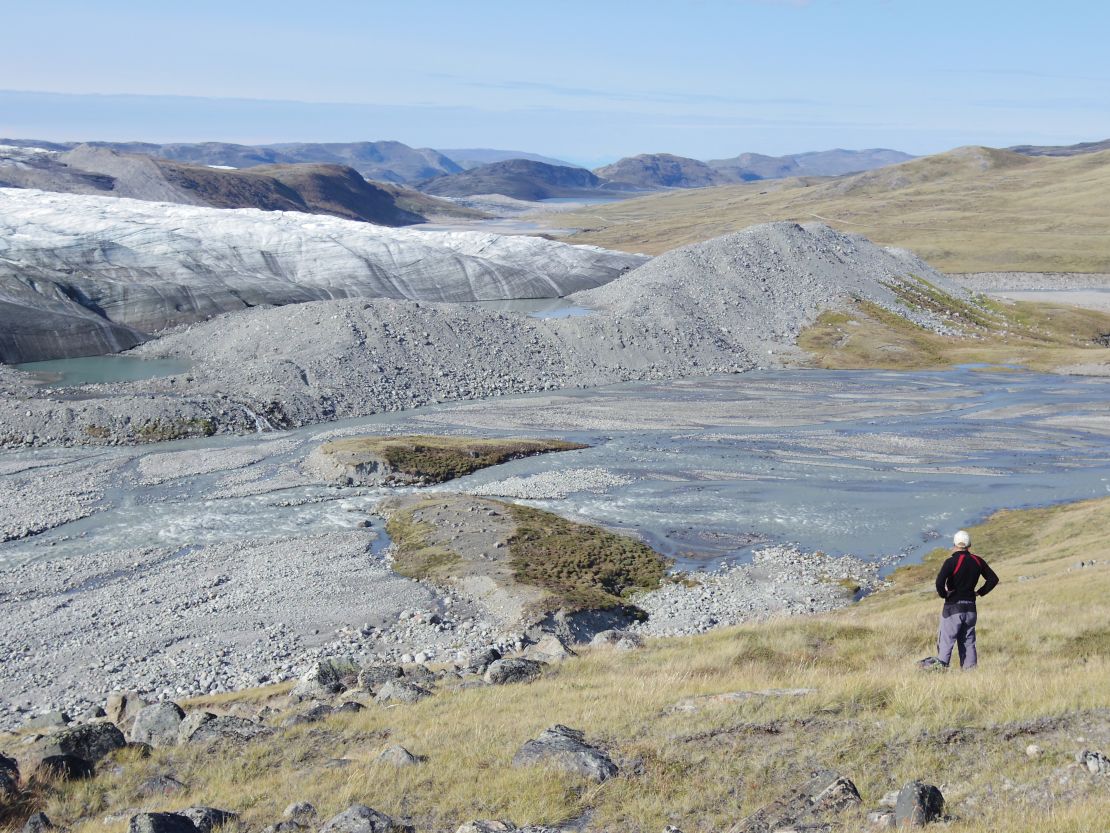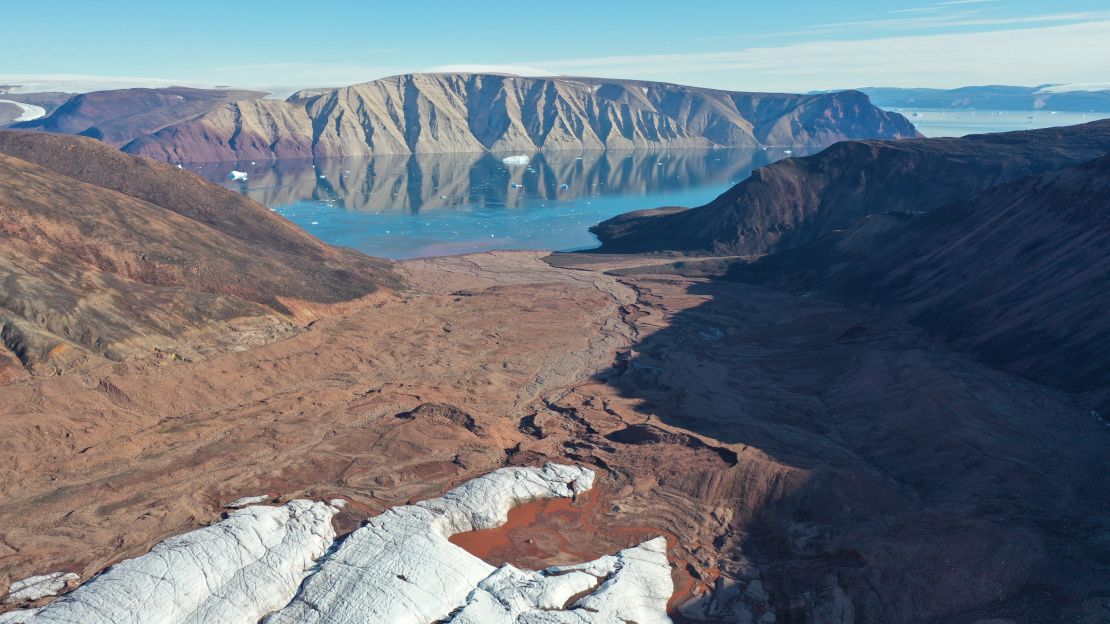CNN
—
Greenland's ice loss over the past three decades has been about 36 times that of New York City — and it's rapidly giving way to wetlands and shrublands, a study released Tuesday showed.
The amount of vegetation in Greenland doubled between the mid-1980s and the mid-2010s, as parts of the country that were once covered in ice and snow were converted to barren rocks, wetlands, or scrubland. Wetlands alone quadrupled during that time.
By analyzing satellite images, scientists found that Greenland has lost 28,707 square kilometers (about 11,000 square miles) of ice over a three-decade period, and warned of a cascade of impacts that could have serious consequences for climate change and sea levels. rise.


Warmer air temperatures cause ice loss, which raises land temperatures. This has led to the melting of the frozen layer beneath the Earth's surface and the permafrost found in much of the Arctic, and that melting releases carbon dioxide and methane that warm the planet and contribute to global warming. Melting permafrost also causes ground instability, which can affect infrastructure and buildings.
“We found signs that the loss of ice is triggering other reactions, resulting in further ice loss and further 'greening' of Greenland, where shrinking ice exposes bare rock that is colonized by tundra and eventually shrubs,” the report's authors, Jonathan Cariwick, said in a press release. “At the same time, the water released from the melting snow moves the sediment and alluvium, and that eventually creates wetlands and fenlands.”
The loss of ice forms what is known as a feedback loop. Snow and ice usually reflect the sun's energy back into space, preventing overheating in some parts of the Earth. But as ice disappears, those areas absorb more solar energy, raising land surface temperatures, which can cause further melting and other negative impacts.
Melting ice increases water levels in lakes, where water absorbs more heat than ice, which increases land surface temperatures.
Greenland has been warming at twice the global average rate since the 1970s, and more extreme temperatures are likely in the future, the study's authors warn.
Greenland is the largest island in the world and is mostly covered by ice and glaciers. About 57,000 people live in the country, an autonomous country within the Kingdom of Denmark. Most of the people are tribal and many depend on natural ecosystems for their survival.
Michael Grimes, lead author of the report, said the flow of sediment and nutrients into coastal waters is particularly problematic for indigenous communities who rely on fishing, as well as hunter-gatherers in other parts of the island.
“These changes are important, especially for indigenous peoples whose traditional subsistence hunting practices rely on the stability of these delicate ecosystems,” he said.
“Furthermore, loss of ice mass in Greenland is a significant contributor to global sea-level rise, which poses significant challenges now and into the future.”